Eleven Table Tennis
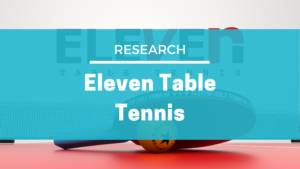
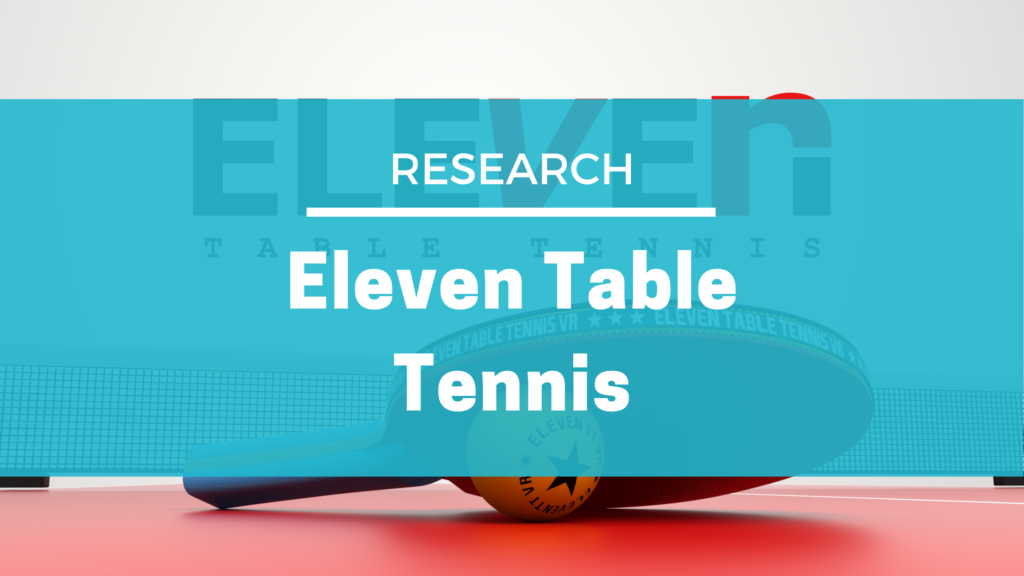
Eleven Table Tennis
Research Report
Abstract
The present study explored the physical and mental aspects of Eleven Table Tennis VR. It involved a comparison between Eleven Table Tennis VR and real-life table tennis as well as a comparison between single player and multiplayer matches within Eleven Table Tennis VR. 27 participants (6 female, 21 male), aged between 14-62 were recruited. Each participant played a total of 40 minutes of Eleven Table Tennis – 20 minutes of single player matches and 20 minutes of multiplayer matches against another player of similar skill level. Questionnaires, including rate of perceived exertion, were completed before and after participation, and heart rate was recorded throughout. On average, Eleven Table Tennis VR was found to induce light exercise with an overall average 59.5% of maximum heart rate reached. Mood was found to increase after participation, with a statistically significant result. Negative emotions felt before playing, such as anxiety and stress, were replaced with positive emotions, such as happiness and excitement. Rate of perceived exertion was found to be higher in multiplayer matches when compared to single player matches, with a statistically significant result. Percentage of maximum heart rate was significantly higher in participants of higher skill levels. Male participants were found to reach a significantly higher percentage of maximum heart rate than female participants, accounting for skill level. No statistical difference was found between heart rate and rate of perceived exertion for single player or multiplayer. No statistical difference was found for average heart rate or maximum heart rate between single player and multiplayer. Percentage of maximum heart rate reserve was used to approximate that Eleven Table Tennis VR is equivalent to approximately 5 METs. Based on this estimation, the energy expenditure of playing Eleven Table Tennis VR is comparable to real-life sports such as badminton singles, ballroom dancing and table tennis.
Introduction
Eleven Table Tennis VR (ETT) is a realistic table tennis VR game on the Steam and Oculus platforms. It can be played single player, against an AI, or multiplayer against a friend or another player from anywhere around the world. The aim of the present study was to explore the physical and mental aspects of Eleven Table Tennis VR (ETT). Comparisons were made to real life sports, including table tennis, and the differences between single player and multiplayer matches within ETT were investigated.

Methods
Population and set-up
27 participants aged between 14-62 were recruited to participate, 6 female and 21 male. A recruitment questionnaire included questions regarding skill level in order to match up participants with a player of similar skill level in the multiplayer part of the study. Informed consent was given before participation, parental consent and supervision was required for all participants under the age of 18. The Oculus Quest 2 was set up before participants arrived, with an approximate space of 2 × 3m, ensuring that the guardian boundary was far enough away from walls and objects, whilst also giving plenty of space to move around without triggering the guardian boundary.
Feedback monitoring
A Polar H10 heart rate (HR) monitor was put on the participant and their resting heart rate (HRrest) was recorded. An initial online questionnaire was completed before putting on the Oculus Quest 2 VR headset. The initial questionnaire included questions such as demographics, table tennis experience/skill and current mood. After the first 20 minutes of play, participants were asked to take off the VR headset and record their rate of perceived exertion (RPE) using an online questionnaire. This was done on a scale of 6-20 as per Borg’s RPE scale (Borg, 1982). RPE is the perception of how hard a participant feels that their body is working and is used to gauge the perception of exercise intensity. Participants then put on the VR headset again and played a further 20 minutes of ETT before completing a final online questionnaire. The final questionnaire included questions such as RPE, current mood, thoughts and comments about the single and multiplayer game modes as well as about the game as a whole and comparisons to real life table tennis.
Game protocol
Participants played against a player of similar skill level as dictated by the skill level given in the recruitment questionnaire. After ensuring the headset was correctly placed and tightened, participants were given instructions on how to navigate the VR environment and how to play if necessary. Participants chose their desired level of AI to play against and played 20 minutes of the single player mode in ETT whilst their heart rate was recorded. Participants were told that they could change the level of the AI at any time, and instructed how to do so. A 5 minute break was taken after 20 minutes of play to complete the RPE questionnaire, before putting the headset on again and being instructed how to enter multiplayer matches, participants then played multiplayer matches for a further 20 minutes.
Results
Demographics
Five participants had no skill/experience with table tennis, eight participants were beginners, 11 participants were of intermediate skill/experience level and three were advanced players. Five participants never play table tennis; eight participants rarely play table tennis; four participants occasionally play table tennis; two participants play table tennis once every few months; two participants play table tennis 2-3 times per month; five participants play table tennis once or twice per week and one participant plays table tennis 3-6 times per week.
Ten participants had never used VR before. Two participants had previously used VR with three degrees of freedom (i.e only able to look around the virtual environment, not physically move around it), and 14 participants had previously used VR with six degrees of freedom (i.e. able to look and physically move around the virtual environment ).
Heart Rate
Maximum HR (HRmax) was estimated for each participant using the equation 208 – 0.7 × age (Tanaka, Monahan & Seals, 2001). The maximum HR reached whilst playing ETT (HRex) for each participant was divided by their HRmax to provide the percentage of their HRmax (%HRmax) reached. Overall, from both single and multiplayer matches, the average %HRmax was 59.5%, with a standard deviation of 9.3%, therefore ETT is categorised as inducing light exercise (50-63% of HRmax) as per the categorisations by the Physical Activity Guidelines Advisory Committee (2008).
Percentage of HR reserve (%HRR) was calculated using (HRex-HRrest)/(HRmax-HRrest) × 100. The average %HRR from both single and multiplayer matches was 34.7%. This was equivalent to approximately walking at a brisk pace of 100m/min (Caballero, Ando & Nakae et al., 2020). One MET is the amount of energy used whilst sitting at rest, METs are used to represent the energy cost of physical activities based on metabolic rate (Jette, Sidney & Blumchen, 1990). According to the data from Caballero, Ando & Nakae et al., (2020) ETT is equivalent to approximately five METs. Based on this estimation and data provided by Jette, Sidney & Blumchen (1990), ETT is comparable in energy expenditure to badminton singles, ballroom dancing, and table tennis (in real-life).
HR was compared between the single and multiplayer matches. Data with missing elements from either single or multiplayer matches was removed from this comparison. The overall average HR in single player matches was 92.8 beats per minute (BPM) with a standard deviation of 15 BPM, and the overall average HR in multiplayer matches was 93.7 BPM with a standard deviation of 17.8 BPM. Average HRex in single player matches was 103.5 BPM with a standard deviation of 15.9 BPM, and average HRex in multiplayer matches was 105.1 BPM with a standard deviation of 18 BPM.
%HRmax was compared between players of different abilities. In order to compare ability level more reliably, with more data in each group, participants of none and beginner skill level were compared against players of intermediate and advanced skill level. Participants of none and beginner skill level had an average %HRmax of 56% and participants of intermediate and advanced skill level had an average %HRmax of 63.6%. Data followed a normal distribution, so a Two-Sample T-Test was conducted which showed a significant difference between skill levels, at an alpha level of 0.1, (t(12)=-1.76992, p=0.051), showing that participants of a higher skill level had a higher %HRmax whilst playing ETT.
The HR data followed a normal distribution and therefore a Paired Samples T-Test was conducted to compare the data. No statistically significant difference was found between average HR (t(12)=0.39, p=0.702) or HRex (t(12)=0.8, p=0.44) in single player matches and multiplayer matches. As there were no female participants with intermediate or advanced skill level For the female participants there was an average HRex of 93.5 BPM with a standard deviation of 11.7 and an average of 50.6% for %HRmax, with a standard deviation of 5.9%. For the male participants, there was an average HRex of 112.5 BPM with a standard deviation of 013.8 and an average of 62.2% for %HRmax, with a standard deviation of 8.3%. A Two-Sample T-Test was conducted to compare %HRmax between male and female participants, which showed that male participants had significantly higher %HRmax (t(9)=3.13, p=0.006).
Perceived Exertion
RPE for single player and multiplayer was compared. The average for single player RPE was 10.6 with a standard deviation of 2.1, and the average for multiplayer RPE was 11.8 with a standard deviation of 2.61. The data followed a normal distribution, so a Paired Samples T-Test was conducted, which showed a significant difference between the RPE for single player and multiplayer (t(24)=-2.22, p=0.036).
RPE was converted to HR using the following method: each participant’s minimum HR and HRmax was taken as the minimum (6) and maximum (20) ratings on the RPE scale and the difference between the HR minimum and maximum was evenly divided between the rest of the scale. The converted RPEs were compared to HRex. The average HRex for single player matches was 107.1 BPM. No statistically significant difference was found between RPE and HRex for either single player (t(19)=0.57, p=0.574), or multiplayer (t(13)=-0.68, p=0.508).
In single player matches, 52% of participants had a lower RPE than HR, 5% of participants had a similar RPE to HR (i.e. within 1 BPM) and 43% of participants had a higher RPE than HR, with an average of 4.9 BPM lower than RPE and a standard deviation of 12.9 BPM. In multiplayer matches, 46% of participants had a lower RPE than HR, 8% had a similar RPE to HR, and 46% had a higher RPE than HR, with an average of 3.3 BPM higher than RPE and a standard deviation of 25.2 BPM.
Questionnaires
Current mood before and after playing was analysed. Current mood was assessed using a Likert scale of 1-9, with 1 being the worst they’ve ever felt and 9 being the best they’ve ever felt. Before playing was an average of 6.44 with a standard deviation of 1.03, and current mood after playing was 6.89 with a standard deviation of 0.92. The data followed a normal distribution. A Paired Samples T-Test was conducted, which showed a significant difference between current mood before and after playing ETT (t(26)=-2.28, p=0.031).
15 participants answered that they were feeling relaxed during the initial questionnaire. Seven of these participants no longer felt relaxed during the final questionnaire. 11 participants answered that they were feeling relaxed in the final questionnaire. Three of these participants did not feel relaxed during the initial questionnaire. During the initial questionnaire, eight participants answered that they were anxious and two participants answered that they were stressed. When completing the final questionnaire, no participants were anxious or stressed. In the final questionnaire, 12 participants included a positive emotion that they were not feeling during the initial questionnaire – these emotions were: happy (5), excited (4), euphoric (2) and content (1).
23 participants answered that they would choose to play ETT for between 20 minutes to 2 hours longer than the 40 minutes played. Four participants answered that they would not choose to play ETT for a longer period of time.
Tables 1-4 show the average questionnaire answers regarding single player, multi-player and the game as a whole. A likert scale between 1 and 7 was used with 1 being a negative answer to the prompt and 7 being a positive answer to the prompt. 4 was a neutral answer. Tables 5-7 show the comments written by the participants regarding ETT in comparison to real life table tennis. Finally, table 8 shows any other comments that participants had about ETT or their answers to the questionnaire.
Table 1. Average ratings for positive questions (1 – describes the game very poorly, 7 – describes the game very well)

Table 2. Average ratings for negative questions (1 – describes the game very poorly, 7 – describes the game very well)

Table 3. Ratings for ETT as a whole (1 – very inaccurate, 7 – very accurate)
Table 4. Overall rating (1- highly unsatisfactory, 7 – highly satisfactory)
Table 5. Comments about the similarities or differences of ETT to real life table tennis
Table 6. Comments about what is preferred in ETT compared to real life table tennis
Table 7. Comments about what is preferred in real life table tennis compared to ETT
Table 8. Other comments

Discussion
On average, ETT induced light exercise (50-63% of HRmax) when played for a total of 40 minutes with a 5 minute break after the first 20 minutes of play. RPE was significantly higher in multiplayer matches compared to single player matches, however there were no statistically significant differences in HR when comparing single player and multiplayer, or HR compared to converted RPE. %HR was significantly higher in higher skilled participants, this aligns with previous research showing that higher level players have a higher HR during play (Castillo-Rodríguez, Alvero-Cruz & Hernandez-Mendo et al., 2014).
Male participants had a significantly higher %HRmax than female participants. Skill level was accounted for and intermediate and advanced participants were removed from this calculation, however as more data was present for males and there was a fairly small sample size for this comparison, a reliable conclusion cannot be made regarding this result.
Percentage of maximum heart rate reserve was used to approximate that Eleven Table Tennis VR is equivalent to approximately 5 METs. Based on this estimation, the energy expenditure of playing Eleven Table Tennis VR is comparable to sports such as badminton singles, ballroom dancing and table tennis (in real-life).
On average, participants found ETT to be exciting, somewhat relaxing and fun. Multiplayer was found to be slightly difficult and less relaxing than single player, however more exciting and slightly more fun. On average, participants found it somewhat mentally refreshing, would choose to play again and spend money on ETT. Participants were immersed, put a lot of effort in and were motivated to get a high score.
Mood was found to improve after playing ETT, with a statistically significant result. With any anxiety and stress felt at the beginning of the session, relieved after paying ETT. Positive emotions were also created that were not felt at the beginning of the session including, happiness, contentment, excitement and euphoria.
The elements that participants preferred in ETT compared to real life table tennis were: not having to pick up the ball to continue the game; the fact that there was an AI to practice against which could be easily matched to their level; that table tennis could be played without the need for a table or opponent; that it was easy to keep score; that it was easier to play; the environment; and being able to connect/play with people from all around the world.
The elements that participants preferred in real-life table tennis compared to ETT were: not wearing a headset; no lag; the feel of hitting the ball; the social aspects of going to a club and the interactions with other players; the field of view; and that it is easier to put more into it in real life.
Conclusion
Overall, participants enjoyed playing ETT and participants’ mood was significantly improved after playing. RPE was significantly higher in multiplayer matches than single player matches, however there was no significant difference in HR when comparing single player to multiplayer. Higher skilled players reached a higher %HRmax with a statistically significant result. On average, ETT induced light exercise (50-63% of HRmax) and is comparable to sports such as badminton singles, ballroom dancing and table tennis (in real-life), based on an estimation of an energy cost of 5 METs from %HRR.
Purchase Eleven Table Tennis
You can purchase Eleven Table Tennis on Steam, Oculus Quest and Oculus Rift by clicking on the appropriate link here.
References
Borg, G. A. (1982). Psychophysical bases of perceived exertion. Medicine & Science in Sports & Exercise, 14(2), 377–381. https://pubmed.ncbi.nlm.nih.gov/7154893/
Caballero, Y., Ando, T. J., Nakae, S., Usui, C., Aoyama, T., Nakanishi, M., Nagayoshi, S., Fujiwara, Y., & Tanaka, S. (2020). Simple prediction of metabolic equivalents of daily activities using heart rate monitor without calibration of individuals. International Journal of Environmental Research and Public Health, 17(1). https://doi.org/10.3390/IJERPH17010216
Castillo-Rodríguez, A., Alvero-Cruz, J. ., Hernandez-Mendo, A., & Fernández-García, J. (2014). Physical and physiological responses in Paddle Tennis competition Related papers Physical and physiological responses in Paddle Tennis competition. International Journal of Performance Analysis in Sport, 14, 524–534
Jette, M., Sidney, K., & Blumchen, G. (1990). Metabolic Equivalents (METS) in Exercise Testing, Exercise Prescription, and Evaluation of Functional Capacity Introduction Metabolic Equivalents of Activities. Clinical Cardiology, 13, 555–565
Physical Activity Guidelines Advisory Committee. (2008). Physical Activity Guidelines Advisory Committee Report, 2008. https://health.gov/sites/default/files/2019-10/ CommitteeReport_7.pdf
Tanaka, H., Monahan, K. D., & Seals, D. R. (2001). Age-predicted maximal heart rate revisited. Journal of the American College of Cardiology, 37(1), 153–156. doi:10.1016/ S0735-1097(00)01054-8


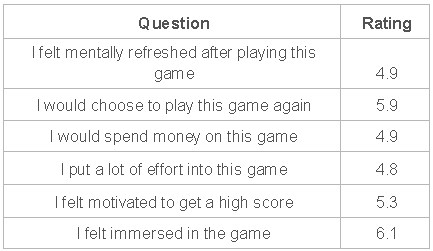

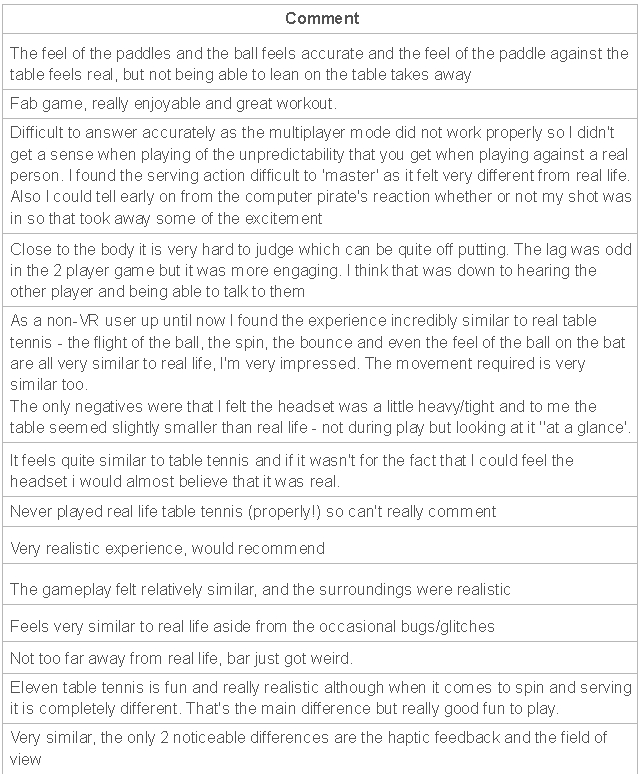
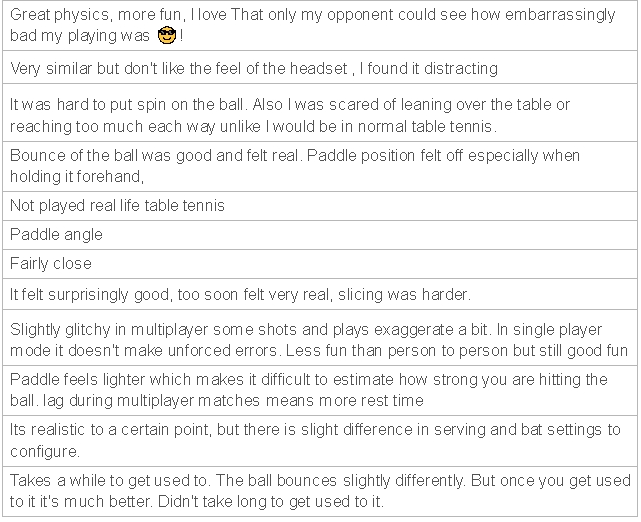


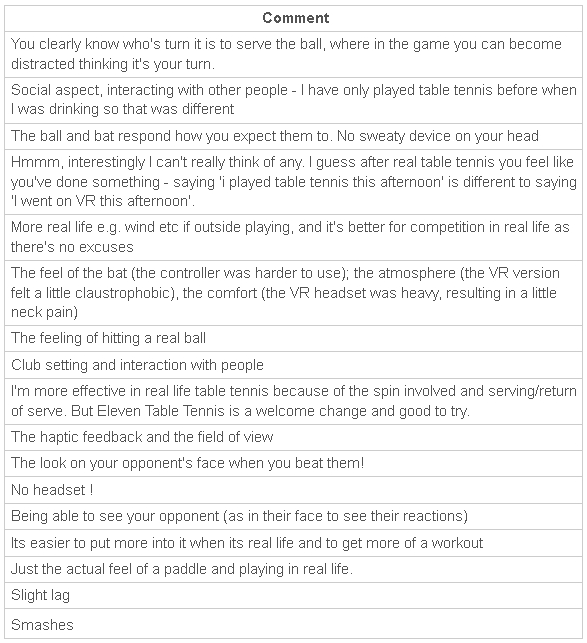

I have found playing 30 minutes of Eleven VR Table Tennis 30 minutes after start of breakfast, arrests my fast carb blood sugar peak completely.
60 minutes of 11TT results in a delayed high fat/protein peak at 2 hours after start of meal, so best for me is to limit playing to 30 minutes.
Link to graphed experiment result:
https://www.diabetesdaily.com/forum/attachments/vrtabletennis_vs_bloodglucose-jpg.24328/